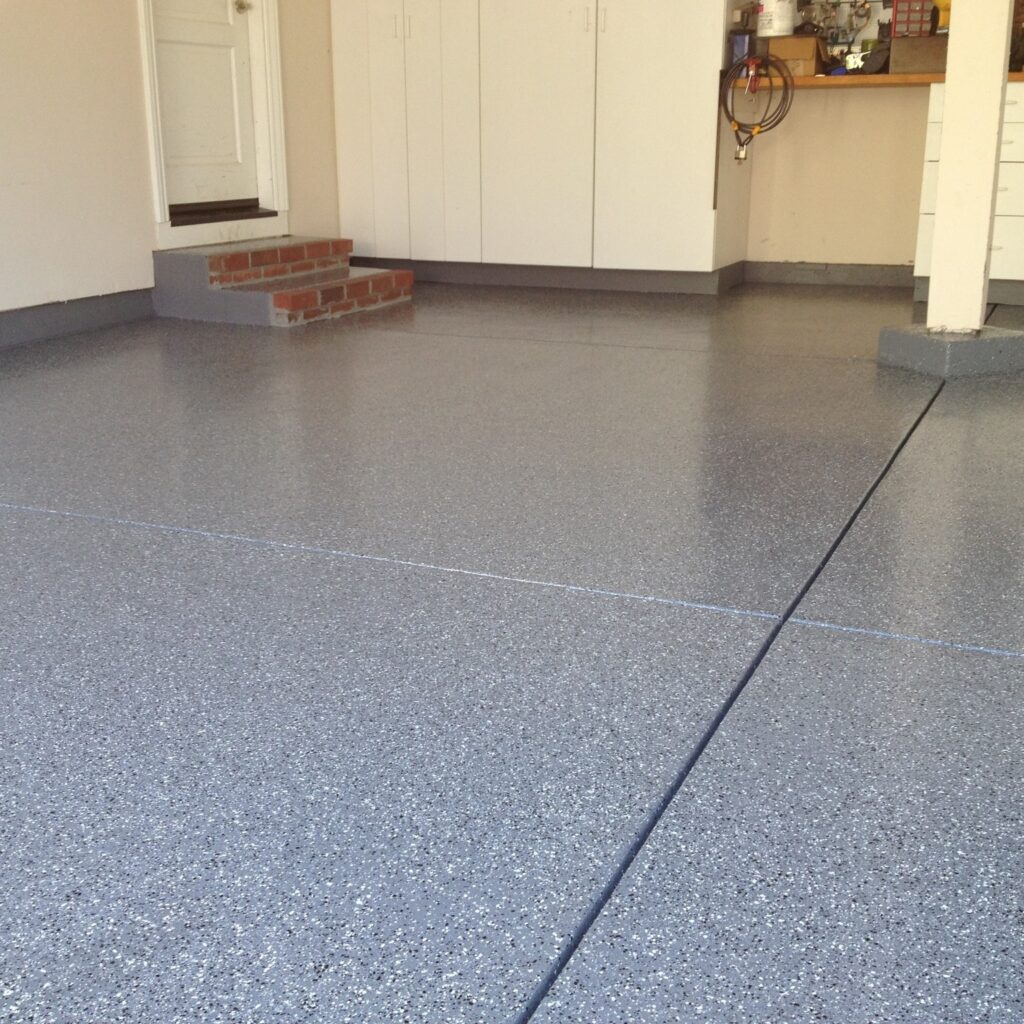When deciding on flooring options for your Conroe garage, it’s valuable to understand the science behind the materials and processes involved – especially when it comes to epoxy flooring. A popular choice for garages, epoxy flooring systems offer homeowners a range of benefits, including appealing aesthetics, remarkable durability, and low maintenance requirements. However, these advantages come from a complex scientific process that may seem intimidating at first glance. In this blog post, we will break down the science behind epoxy flooring, demystifying the technology and providing a clearer understanding of its capabilities and benefits for your Conroe garage.
From understanding the chemistry of epoxy components to exploring the curing process and factors contributing to its durability and longevity, we will delve into the scientific aspects of epoxy flooring systems. This knowledge will enrich your decision-making process and empower you to make informed choices that best meet your garage requirements and preferences.
As you journey through the fascinating world of epoxy flooring science, you’ll gain valuable insights not only about the technology itself but also its impact on your home, comfort, and satisfaction. Ultimately, we aim to enlighten you about this remarkable material and help you make better, more educated decisions as you transform your Conroe garage with an epoxy flooring system.
The Chemistry of Epoxy Flooring Systems
The foundation of epoxy flooring lies in its chemistry. To better understand how this flooring system works, it’s essential to explore the interaction between epoxy resin and hardener, as well as the subsequent bonding process.
Epoxy Resin and Hardener:
Epoxy flooring systems are created by combining epoxy resin and an epoxy hardener (also known as a curing agent). The epoxy resin is a thermosetting polymer and forms the primary component, providing the structural strength and durability of the flooring system. The epoxy hardener is responsible for initiating the curing process, which transforms the liquid resin into a solid, durable surface.
The Bonding Process:
When combined, the epoxy resin and hardener form a chemical reaction, leading to covalent bonding within the material. This chemical reaction occurs in several stages, beginning with the initial mixing of the two components. The resin molecules and hardener molecules cross-link, creating a three-dimensional network that results in the formation of a solid, seamless surface with superior strength and durability.
The Curing Process: Polymerization
The curing process, also known as polymerization, is a crucial aspect of epoxy flooring systems, responsible for transforming the liquid resin-hardener mixture into a rigid, robust surface.
Exothermic Reaction
The curing process occurs through an exothermic reaction, generating heat as a byproduct. When the epoxy resin and hardener are combined, this reaction is triggered, causing the mix to heat up. This increase in temperature accelerates the curing process as the material hardens, changing from a liquid to a rigid state. The heat generated during the curing process also contributes to the chemical bonding that creates the durable, continuous surface characteristic of epoxy flooring systems.
Role of Temperature and Humidity in Curing:
Temperature and humidity play significant roles in the curing process. Both factors can impact the rate at which the epoxy flooring system cures and hardens. Higher temperatures can accelerate the curing process, while cooler temperatures may slow it down. Similarly, high humidity levels can extend the curing time, with excess moisture potentially leading to improper curing and a compromised final surface.
Factors Contributing to Epoxy Flooring Durability and Longevity
Epoxy flooring is known for its long-lasting durability and resistance to various damaging factors. This section will explore the key elements contributing to the robustness of epoxy flooring systems.
Chemical Resistance
One of the primary factors contributing to the durability of epoxy flooring systems is their resistance to chemicals. Due to the three-dimensional network formed during the curing process, epoxy flooring surfaces are capable of withstanding exposure to various chemicals, including corrosive substances, fuels, and solvents. This chemical resistance not only prolongs the life of the flooring system but also protects the concrete substrate from damage.
Mechanical Strength
Epoxy flooring systems are renowned for their mechanical strength, which significantly contributes to their durability and longevity. The robust covalent bonding within the material enables epoxy floors to withstand heavy loads, impacts, and abrasions, making them an ideal choice for garages and other high-traffic spaces.
Adhesion to Concrete Surfaces
The strong adhesion of epoxy flooring systems to concrete substrates is another critical factor contributing to their durability. When properly prepared, the concrete surface forms an ideal substrate for the epoxy application, ensuring a seamless bond between the two materials. This strong adhesion prevents delamination and promotes long-term durability, helping to maintain the structural integrity of your garage floor.
Maximizing the Durability and Longevity of Your Epoxy Flooring System
To get the most out of your epoxy flooring system and its inherent durability, consider the following best practices:
Proper Surface Preparation
Ensure the concrete substrate is thoroughly cleaned and prepared before installing the epoxy flooring system. Surface preparation is crucial for promoting strong adhesion and preventing potential issues such as delamination or air bubbles within the final surface.
Optimal Environmental Conditions
Be mindful of temperature and humidity levels during the epoxy flooring installation. Maintaining optimal environmental conditions will ensure a smooth, consistent curing process and maximize the durability of your epoxy floor.
Routine Maintenance
While epoxy flooring systems are low-maintenance, periodic cleaning and inspection can further enhance their longevity. Promptly address any minor damage or wear to maintain the surface’s integrity and extend its lifespan.
Conclusion
Understanding the science behind epoxy flooring systems is not only enlightening but also essential for making well-informed decisions. By diving into the chemistry, the curing process, and the factors contributing to epoxy flooring’s durability, you gain valuable insights that can help you choose the ideal solution for your Conroe garage.
At Musselman Painting, our experienced professionals are dedicated to providing high-quality epoxy flooring solutions tailored to your specific needs. We believe that deeper knowledge about the science of epoxy flooring can lead to better home improvement choices and ultimately result in a more beautiful, functional, and durable garage floor. Contact us today or fill out our online form to learn more about the science behind epoxy flooring in Conroe and how we can help transform your garage space.







